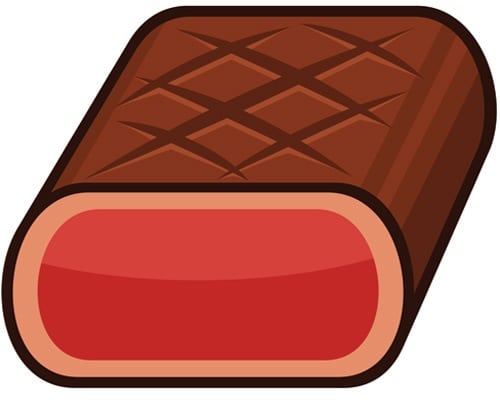How Do You Like Your Steak?
How many of you out there know what temperature your ground beef should be cooked to? What about pork? Chicken?
USDA Recommended Safe Minimum Internal Temperatures
Alright now some of you are probably thinking 145 °F for beef!?
Please take note, if you cook your beef steak to the recommended temperature, IT WILL BE OVER DONE!
A better chart for determining doneness on beef products such as steaks can be below.
Please take note, if you cook your beef steak to the recommended temperature, IT WILL BE OVER DONE!
A better chart for determining doneness on beef products such as steaks can be below.
It is important to note that this is for WHOLE MUSCLE cuts, NOT ground meat.

Rare
Rare (saignant)
cold red center; soft, 52–55 °C 125–130 °F

Medium Rare
Medium rare (à point)
warm red center; firmer, 55–60 °C 130–140 °F

Medium
Medium (demi-anglais)
pink and firm, 60–65 °C 140–150 °F

Medium Well
Medium well (cuit)
small amount of pink in the center, 65–69 °C 150–155 °F

Well Done
Well done (bien cuit)
gray-brown throughout; firm, 71-100 °C 160-212 °F
Straight from USDA the guidlines for proper internal temperatures are as follows:
Hmmm… So now some of you are probably wondering…? If I cook my steak to 120-130 so it’s rare and juicy, am I taking a healthy safety risk in doing so!? Food Scientist Harold McGee (via Food Network) gives us a GREAT explanation:
“…meats inevitably harbor bacteria, and it takes temperatures of 160 degrees Fahrenheit or higher to guarantee the rapid destruction of the bacteria that can cause human disease-temperatures at which meat is well-done and has lost much of its moisture. So is eating juicy, pink-red meat risky? Not if the cut is an intact piece of healthy muscle tissue, a steak or chop, and its surface has been thoroughly cooked: bacteria are on the meat surfaces, not inside. In other words, with whole cuts of meat it is the external temp, not the internal temp that must exceed 160 degrees Fahrenheit. Normal cooking methods-sautéing, grilling, roasting, braising, etc.-raise surface temperatures far above 160 degrees Fahrenheit. (To get a sense of this, consider that meat only begins to brown at 230 degrees Fahrenheit.) People very rarely get sick from rare or medium rare meat. Ground meats are riskier, because the contaminated meat surface is broken into small fragments and spread through the mass. The interior of a raw hamburger usually does contain bacteria, and is safest if cooked well done. Overwhelmingly, people get sick from the way meat is handled in the home: from cross-contamination, lack of cleanliness and holding meat at dangerous temps. Internal temperature should be the least of your worries.”
“…meats inevitably harbor bacteria, and it takes temperatures of 160 degrees Fahrenheit or higher to guarantee the rapid destruction of the bacteria that can cause human disease-temperatures at which meat is well-done and has lost much of its moisture. So is eating juicy, pink-red meat risky? Not if the cut is an intact piece of healthy muscle tissue, a steak or chop, and its surface has been thoroughly cooked: bacteria are on the meat surfaces, not inside. In other words, with whole cuts of meat it is the external temp, not the internal temp that must exceed 160 degrees Fahrenheit. Normal cooking methods-sautéing, grilling, roasting, braising, etc.-raise surface temperatures far above 160 degrees Fahrenheit. (To get a sense of this, consider that meat only begins to brown at 230 degrees Fahrenheit.) People very rarely get sick from rare or medium rare meat. Ground meats are riskier, because the contaminated meat surface is broken into small fragments and spread through the mass. The interior of a raw hamburger usually does contain bacteria, and is safest if cooked well done. Overwhelmingly, people get sick from the way meat is handled in the home: from cross-contamination, lack of cleanliness and holding meat at dangerous temps. Internal temperature should be the least of your worries.”
So feel free to eat the pink, juicy. medium rare steak!


